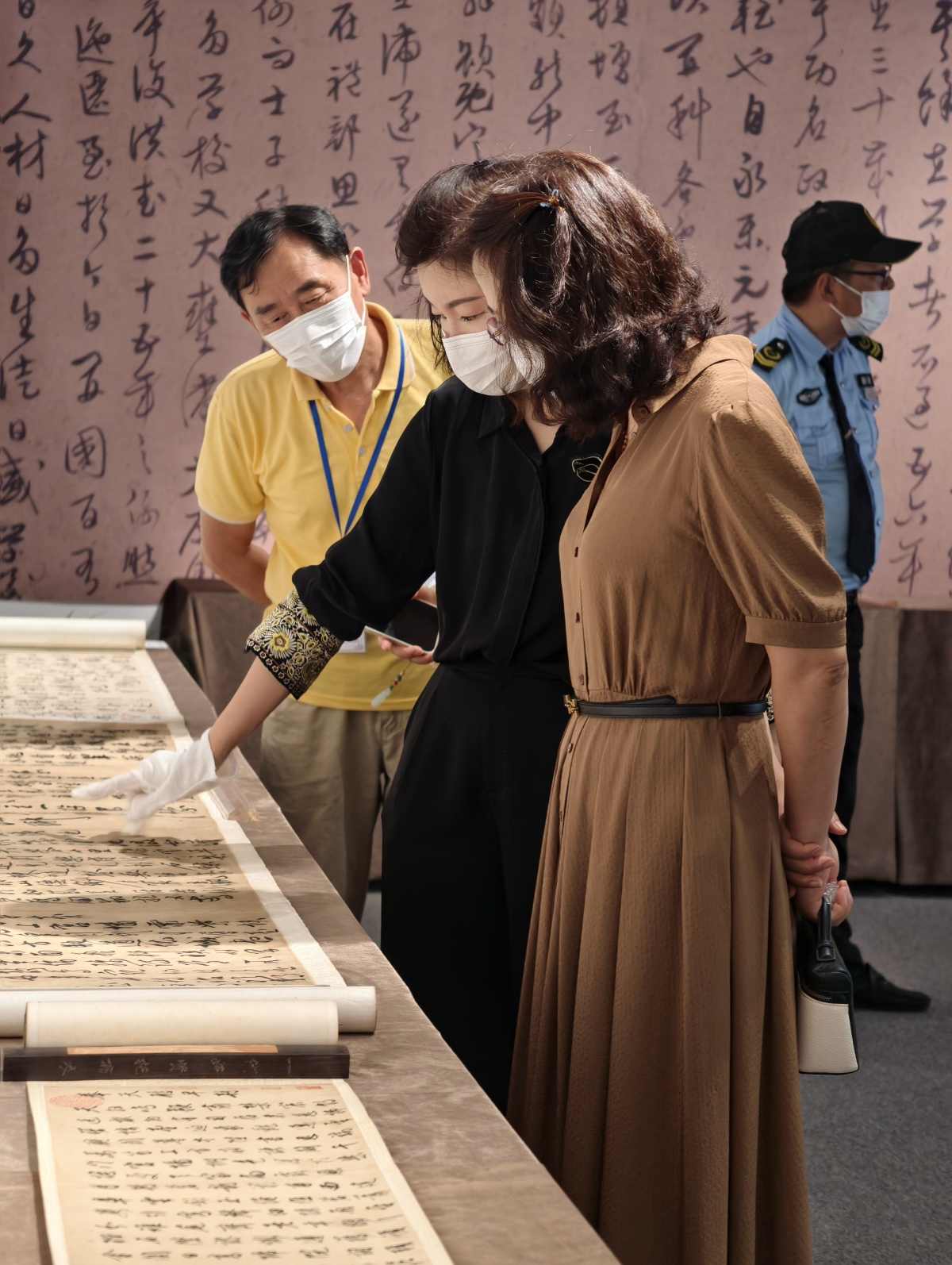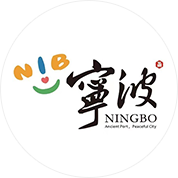 Event scene.
Event scene.
Around the time of the Summer Solstice, the event “Tianyi Treasures: Echoes of Hengshan—An Appreciation of Wen Zhengming Manuscripts from the Tianyige Collection” was held in the elegant and antique setting of Zhujintang Hall.
More than fifty calligraphy and painting enthusiasts, scholars, and collectors gathered together to explore, through the ink and brush charm of Ming-dynasty master Wen Zhengming, a cultural lineage of Jiangnan that spans over five centuries.
The Mystery of the Manuscript: From the Imperial Examination System to the Art of Calligraphy
Themed “Echoes of Hengshan”, the event showcased a selection of Wen Zhengming’s calligraphic rubbings from the Pavilion’s collection.
Wen Zhengming (1470–1559), born Wen Bi, styled Zhengming and later Zhengzhong, with the sobriquet Hengshan, was honoured by contemporaries as “Wen the Attendant” for his post as Hanlin Yuan Daizhao. A native of Changzhou (modern Suzhou), he was a renowned painter, calligrapher, and man of letters of the Ming dynasty. He was ranked among the “Four Masters of the Ming” alongside Shen Zhou, Tang Yin, and Qiu Ying, and among the “Four Talents of Wu” with Zhu Yunming, Tang Yin, and Xu Zhenqing.
The highlight of the exhibition was a running-cursive manuscript scroll by Wen Zhengming, completed in the 10th year of the Zhengde era (1515).
This precious scroll was donated by the famous Ningbo bibliophile Zhu Zanqing and authenticated in 1980 by calligraphy master Sha Menghai, who also inscribed its title. Never before publicly exhibited, it holds a special air of mystery.
Unlike Wen’s formal works or letters, the manuscript displays a freer, more spontaneous style, with lively and varied structures—an unfiltered expression of the artist’s true feelings, fully embodying the essence of Wen’s calligraphy.
 Wen Zhengming Running-Cursive Manuscript (title inscribed by Sha Menghai)
Wen Zhengming Running-Cursive Manuscript (title inscribed by Sha Menghai)
The manuscript contains two pieces: a Letter to Minister Lu on the Three Studies and a Sacrificial Text to the Earth God.
Although both appear in Wen’s collected works, Futian Ji, the manuscript’s revisions differ from the printed versions, making it a valuable primary source for textual research.
Dr. Cai Chunxu of Soochow University guided the audience through its details: “This Letter to Minister Lu on the Three Studies is an important document written by Wen to his fellow townsman, Minister of Personnel Lu Wan. It not only reflects the deep contradictions in the Ming imperial examination system but also shows the political wisdom of the literati.”
A small variation—“虽有一二倖进” (“though a few gain advancement”) in the manuscript versus “虽有倖进” (“though some gain advancement”) in the collected works—vividly illustrates the social issue of surging student numbers and limited promotion opportunities. Drawing on his own experience of failing the exam ten times, Wen earnestly urged a return to the Hongwu-era system and an increase in annual tribute quotas.
“This manuscript is an invaluable first-hand resource for studying the history of Ming education,” Cai concluded.
The artistry of the calligraphy is equally striking. In contrast to Wen’s dignified and steady late style, this running-cursive work moves like dragons and snakes, with dynamic and varied forms.
“These seemingly casual corrections are emotional imprints from the act of creation,” remarked a seasoned calligraphy enthusiast, pointing to an ink blot. “Through these strokes, we can almost feel the passion of the artist at the moment of writing.”
 Event scene.
Event scene.
The exhibition also featured other fine works from the collection, such as Wen Zhengming’s Running Script Seven-Character Poem Scroll, Regular Script Folding Fan with West Chamber Excerpt, and Regular Script Folding Fan with Yueyang Tower Essay.
Cai highlighted the Running Script Seven-Character Poem Scroll: “This is dated simply ‘April of the Jiajing reign.’ Although no year is given, references to the year ‘Renwu’ and the signature ‘Changzhou Wen Zhengming with bowed head’ indicate it was likely created in the first year of Jiajing (1522).”
Not included in Wen’s collected works, this occasional piece shows the natural and unpretentious brushwork of his fifties, contrasting sharply with his mature late style.
Also on display were two calligraphy scrolls by Wen, generously loaned by a Ningbo collector, including the especially rare Four-Style Script Four Seven-Character Regulated Poems Scroll.
Written on golden-speckled Sutra paper, the scroll flows with elegance and grace. Notably, Wen applied a distinctive approach: the first poem, Mount Wansui, follows Su Shi’s running script; the second, South Terrace, draws on Mi Fu; the third, Taiye Pond, references Huang Tingjian; and the fourth, Platform, takes Preface to the Sacred Teaching as its base. This synthesis showcases Wen’s profound mastery and unique artistic vision.
 Wen Zhengming’s Running Script Seven-Character Poem Scroll.
Wen Zhengming’s Running Script Seven-Character Poem Scroll.
Wu and Siming: An Artistic Dialogue Across Time and Space
During the appreciation session, Wen Zhengming’s connections with Ningbo literati became a central topic.
In 1508, he composed Friendship Mountain Cottage for Siming scholar Li Minxing, with the famous line “Green hills and men as mutual hosts and guests,” reflecting the refined bonds among literati. In 1530, at the request of his student Shen Damo, he wrote the epitaph for Xue Lin of Yin County—an exemplar of small regular script whose original stele is preserved in the Tianyige Museum.
Through Shen Damo (styled Yuwen), Wen became acquainted with Xue Lin (styled Wenshi). Notably, Shen’s family had long-standing ties with the Wens—Shen’s grandfather Shen Lin and Wen’s father Wen Lin were not only fellow townsmen but also passed the jinshi exam in the same year; Xue Lin had even served as Shen Damo’s private tutor. This dual link of “teacher-student” and “family friendship” typifies Ming literati relations.
After Xue Lin died in 1530, his son Xue Chen commissioned Wen to write the epitaph. This work, a representative piece of Wen’s small regular script, remains in the Tianyi Pavilion Museum.
Between 1557 and 1558, Wen penned an inscription for Xue Chen’s Cursive Thousand Character Classic, praising him as “specialising in Huang Tingjian for regular script, and the Two Wangs for running-cursive,” calling him “a leading figure in Zhejiang.”
This remark reveals not only Wen’s high regard for his student but also the deep artistic integration between Wu and Siming.
During the seminar, Cai displayed a high-resolution image of a 1564 letter from Ningbo calligrapher Feng Fang to Wen’s son, in which Feng respectfully addressed Wen as “Master Heng” and confessed he “dared not neglect” his request. “Five years after Wen’s death, Feng was still in close contact with his family—proof of the lasting influence of Wu’s art on Siming’s literary scene,” Cai emphasised. “From poetic exchanges to epitaphs to artistic transmission, this multi-layered bond—rooted in art, geography, and kinship—helped form the cultural network of the Ming Jiangnan region,” Cai summarised.
 Wen Zhengming’s Regular Script Folding Fan with West Chamber Excerpt.
Wen Zhengming’s Regular Script Folding Fan with West Chamber Excerpt.
Echoes of Hengshan: Bringing Cultural Relics to Life
The event represents Tianyi Pavilion’s innovative effort to revitalise its collections. With modern technology, visitors could vividly experience the pressure and rhythm of Wen’s brushstrokes and appreciate the unique charm of traditional calligraphy.
As the session drew to a close, the discussion grew more animated. A young attendee asked: “Wen Zhengming failed the imperial exams many times, but still became a great artist. What does this mean for art education today?”
Cai answered with the example of Xue Chen: “True artistic heritage requires drawing on many sources—Xue studied first under Feng Fang, then with Wen Zhengming, absorbing the elegance of each, and ultimately forged his style.”
As dusk fell, the fragrance of ink still lingered in Zhujintang Hall.
From the artistic kinship between Fan Qin and Wen Zhengming in the Jiajing era to today’s deep dialogue between scholars and the public, Tianyi Pavilion remains a vital hub for cultural heritage. These timeworn yet vivid works will continue to nourish the hearts of people today.
The Tianyi Treasures series will continue, upholding the principle of “few but fine, specialised and deep,” to breathe new life into its sleeping collections.
Source: Yongpai
Reporter: Huang Yinfeng
Correspondent: Shen Fangyi
Editor: Ye Ke
编辑:叶珂



